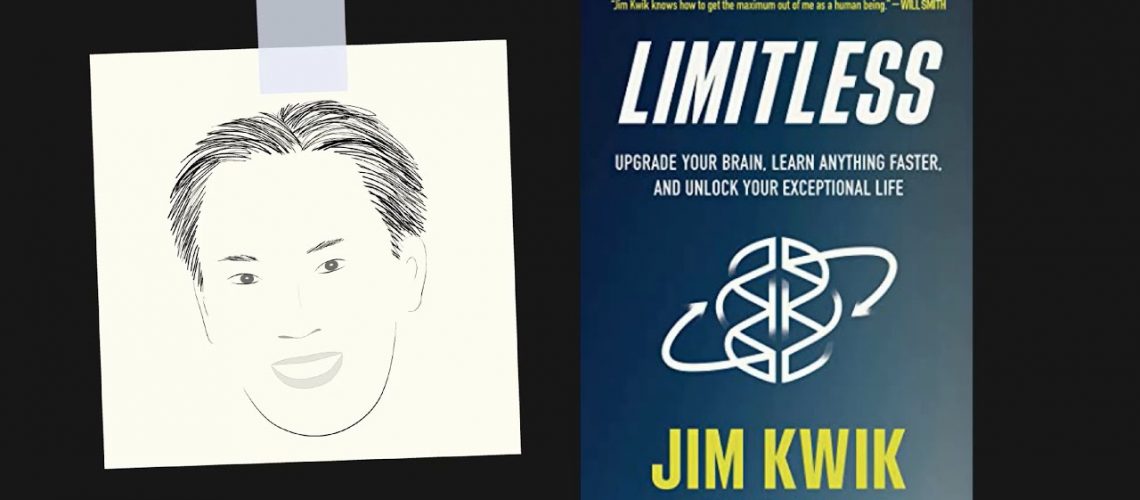In the following video, Productivity Game goes over how to increase your reading speed with the right mindset, motivation and methods.
Key Takeaways
"Leaders are readers."
Years earlier he hit his head and suffered a brain injury and as a result he found it hard to memorize basic facts and it took him three years longer to read than his peers.
But today, Kwik can recall the names of 50 or more people in an audience that he’s just met, and he can recite a string of a hundred random numbers forward and back while on stage.
At the heart of Kwik’s mental transformation is a simple truth: we all have the capacity to mold our brains and constantly improve our mental abilities.
If you’re struggling to learn it’s not due to an innate brain limitation. It’s either due to a limiting mindset, limited motivation or a lousy learning method.
Mindset
"Whether you think you can or you can't, you're right."
"When you fight for your limitations, you get to keep them."
The key to improving any mental ability is to suspend any limiting beliefs and temporarily act as though your mental abilities are limitless.
4, 3, 2, 1 method
To prove this try the following 10 minute exercise called the 4, 3, 2, 1 method:
- Set a timer for 4 minutes.
- Open an easy-to-read book and start reading at a comfortable pace, while using your finger to underline the words as you read them.
- When the 4 minute timer expires, mark the point at which you stopped.
- Now go back where you started and set a timer for 3 minutes and try to get to that same point you reached after 4 minutes.
- Don’t worry if your comprehension isn’t perfect, just make sure you underline and see every word.
- When the 3-minute timer expires do the same for 2 minutes, then 1 minute.
After this 4, 3, 2, 1 exercise, resume reading the rest of the book at a comfortable speed for 4 minutes.
If you compare the number of lines you read now, to the number of lines you read in the first 4 minutes of the exercise, you will be pleasantly surprised by how much faster you can read.
Motivation
Now that you have the mindset that you can read faster than you thought you could, let’s focus on motivation.
What book would you get through quicker and learn more from:
A book you’re forced to read in English class or a book recommended by your mentor—someone you greatly admire who tells you that this book contains the secret that transformed my life?
After hearing that statement it’s hard not to wonder what’s the secret.
If you pick up a book in a peak state of curiosity, wonder, and excitement, you are bound to learn quicker and retain more.
"All learning is state dependent."
A good reason why you may not have learned much in school is because you found school boring.
Before you start reading anything, put yourself in a peak state of curiosity by asking the following three questions:
1. What great insight will I get from this book?
2. How will this insight forever change my life?
3. When will I get to use this insight?
- I like to assume that every book I read contains a profound insight and I also like to imagine that someone else has just paid 10 million dollars for the information I’m about to read.
- With that mental framing I’m extremely curious and motivated to absorb the information I’m about to read.
Upgrade Reading Methods
"When was the last time you took a class called READING? For most it was back in the fourth or fifth grade and if you're like most people your reading skill is probably still the same as it was back then."
These three habits are:
1. Regression
2. Subvocalization
3. Word-by-word reading
The 3 Bad Reading Habits
1. Regression
To solve the problem of regression, you need to use a pacer.
Attention follows movement, so if you use your finger to guide your reading by underlining the text as you read it, you prevent your attention from jumping around the text.
Many people have low reading comprehension because reading is too slow and boring for them.
But if you move your finger at a pace that’s just on the edge you’re perceived max reading speed, you will require your full attention to comprehend what you’re reading.
More attention equals more retention.
- Use a finger as a pacer when reading a physical book.
- Use your finger as a pacer when reading on your phone by sliding it down the side of the phone.
- Use your mouse as a pacer when reading content on your computer.
2. Subvocalization
Subvocalization is the habit of saying the words to yourself in your head as you read.
When you feel the need to sound out every word as you read, your reading speed is limited by how fast you can talk.
You can get your inner narrator to talk fast and sound out 200 to 250 words per minute, which happens to be the average reading speed, but there is no need to hear the words in your head as you read them.
You’ve seen 99% of the words you’ve read before, and you have mental images for most of them.
If you can bring to mind the image a word represents instead of sounding out that word, you’ll become a much more efficient reader.
To break your subvocalization habit and turn reading into a purely visual experience and thus dramatically improve your reading speed, quietly count out loud as you read.
It’s hard for your mind to sound out words and speak out numbers at the same time, so when you start reading count 1, 2, 3, 4, you’ll free your mind of the internet narrator and train your mind to see the words on the page as images and turn what you’re reading into a motion picture experience.
3. Word-By-Word Reading
When you first learn how to read, you trained your eyes to look at one word at a time.
But now you’re familiar with most words, so there’s no reason not to look at chunks of words—like 3, 4, 5 words at a single glance.
Instead of reading ‘the boy walked home’ you can see all four words at one time.
This technique actually works in conjunction with the last technique because it’s easier for your mind’s eye to generate imagery for groups of words, rather than a single word.
- I’ve started to train my brain to use my peripheral vision and see chunks of words at one time by using a free program called Spreed. It takes a body of text in my web browser and breaks it into word chunks that display one at a time.
Conclusion
In the end, remove the perceived limitation on your reading speed by setting aside 20 minutes for the next two weeks to build your speed reading muscle.
Each day forget what you believe your limitations are and pretend for 20 minutes that your potential reading speed is limitless.
Then grab a book you’ve been wanting to read and take one minute to ask yourself questions about the book: like what great insight will I get from this book and how will this insight change my life?
The goal is to put yourself in a peak state of curiosity so that you’re motivated to learn what you read.
Then use the next 10 minutes to warm up your speed reading muscle with the 4, 3, 2, 1 method.
Then focus on each of the following methods for 3 minutes each.
- First use a pacer to prevent regression. As you read, move the pace you’re at a speed that require full attention.
- Next, count out loud as you read to stop yourself from sub vocalizing the text.
- Lastly, relax your eyes and expand your peripheral vision to try and take in more than one word at a time.
When you start using these three methods: pacing, counting, and expanding, you’ll feel a little awkward but if you continue using them, you’ll start to see your speed and reading comprehension improve dramatically.

